Columbus, the debut feature film from artist Kogonada set in the unlikely midcentury architecture mecca of Columbus, Indiana, was released to great acclaim this August and enjoyed a slow but celebrated rollout in independent theaters throughout the fall.1 The pseudonymous filmmaker has been hailed for the originality of his voice and technique, in particular for the careful framing of architecture in his film. His use of deep, flat focus and wide shots foreground the settings and distances viewers from the action of the actors. In this film, architecture has the presence normally afforded a central character. I saw Columbus in Columbus, Indiana, surrounded by a pumped-up hometown crowd eager to call themselves out as extras or to identify their cars as captured in parking lots. There was a conspiratorial air in the Yes Cinema, a nonprofit art-house theater where Columbus was enjoying the theater’s highest-grossing run ever, and promotional posters and materials were for sale in the lobby.2 There were six back-to-back showings of the film on the day I visited. With every new scene, there was a fresh round of murmuring, a collective self-recognition on the big screen.
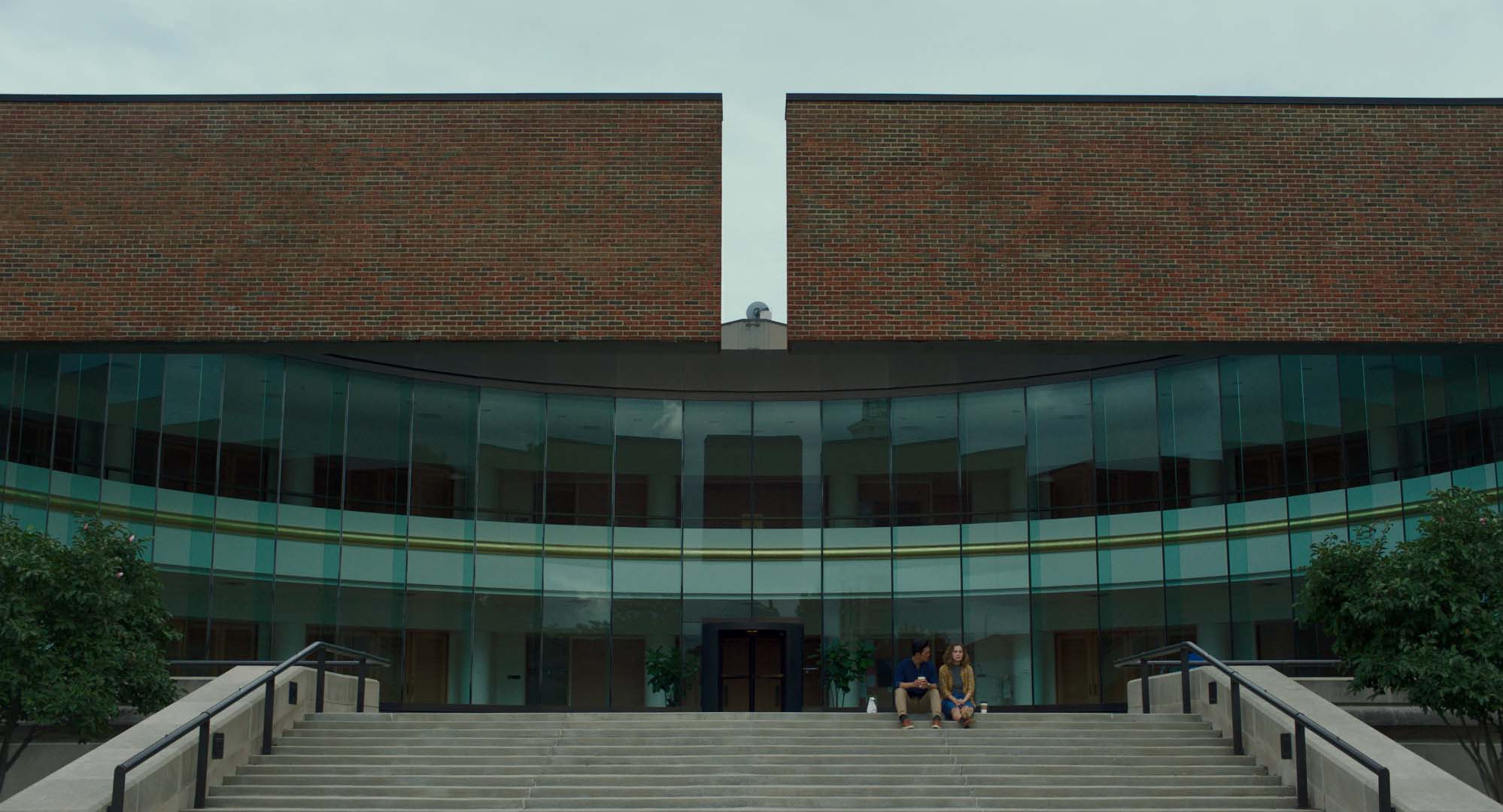
The restrained action of Columbus focuses on a growing friendship between Casey, a twentyish Columbus native adrift but independent and opinionated, and Jin, a thirtysomething translator of English books to Korean, who arrives in town after his father, a well-known architecture historian and professor, is hospitalized while visiting. After a chance encounter, Casey—eager for companionship and a conversational sparring partner—offers herself to Jin as a local tour guide. In the process, they cover a lot of emotional ground, mostly to do with their parents: Jin’s resentment of his father’s focus on his career, and Casey’s sense of responsibility toward her mother, who is a recovering drug addict.
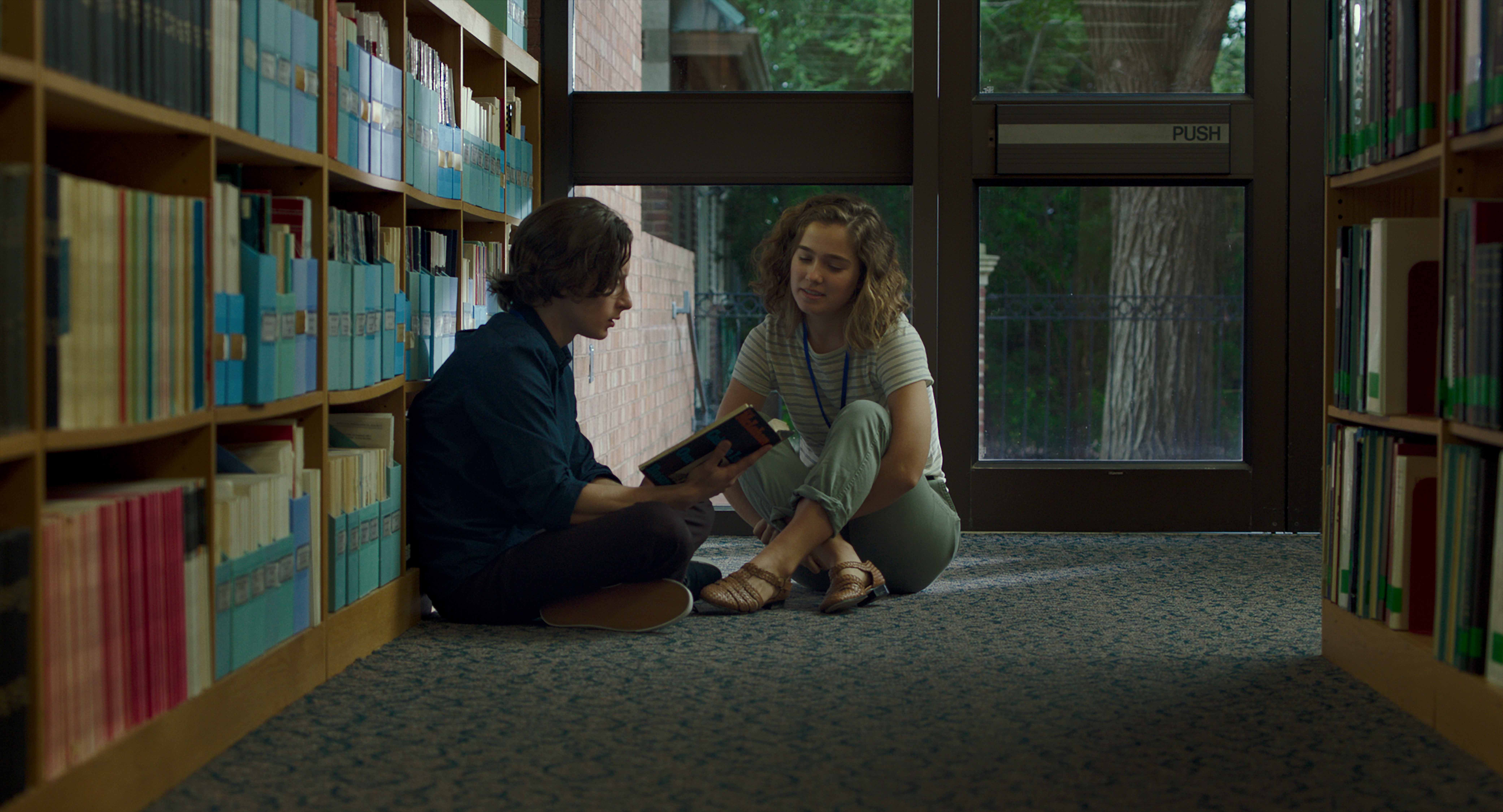
Echoing the pace of Kogonada’s long takes and wide shots, conversation in the film questions contemporary fixations with speed and novelty. In an early scene, Casey’s friend Gabriel, who works with her at the I. M. Pei–designed public library and proudly shares her “bookish” values, explains an idea he’d found scribbled in the margins of a reshelved book. It’s a red herring, he says, paraphrasing the margin noter, that “shortened attention span” is behind younger generations’ fixation with video games and other loud, fast activities. Young people aren’t simply wired to value a quick thrill—instead they’re choosing to focus on different targets. “Are we losing interest in things that matter?” he asks Casey. It’s on this particular anxiety about the present that the film’s drama uneasily (and self-consciously) hangs. Casey agrees with Gabriel’s assessment, and it’s the conflict between her investment and faith in the architects of the past (their narratives of history, in particular) and Jin’s cynicism about that same history that drives the action of Columbus.
The film’s release this August nearly coincided with the opening of Exhibit Columbus, a new architecture and design festival supported by the town’s historic preservation nonprofit. It was while I was in town attending the festival that I realized Columbus was playing at the theater there and stopped in to see it. While Columbus’s modernist legacy sets the scene for Exhibit Columbus, the event itself is focused on creating new reasons to visit. Experiencing the difference between the backward-looking nostalgia of the film and the forward- and outward-looking focus of the festival in the same day was jarring. At the core of Exhibit Columbus are the Miller Prize installations, five large outdoor projects by well-known practices situated along the town’s main axis. In addition, a handful of smaller works by less-established offices were commissioned for the perpendicular Washington Street corridor; a series of pavilions by teams from midwestern universities constructed at Central Middle School; and panels of brightly colored plastic string made by local high schoolers (which nearly steals the show) installed on upper Washington Street.
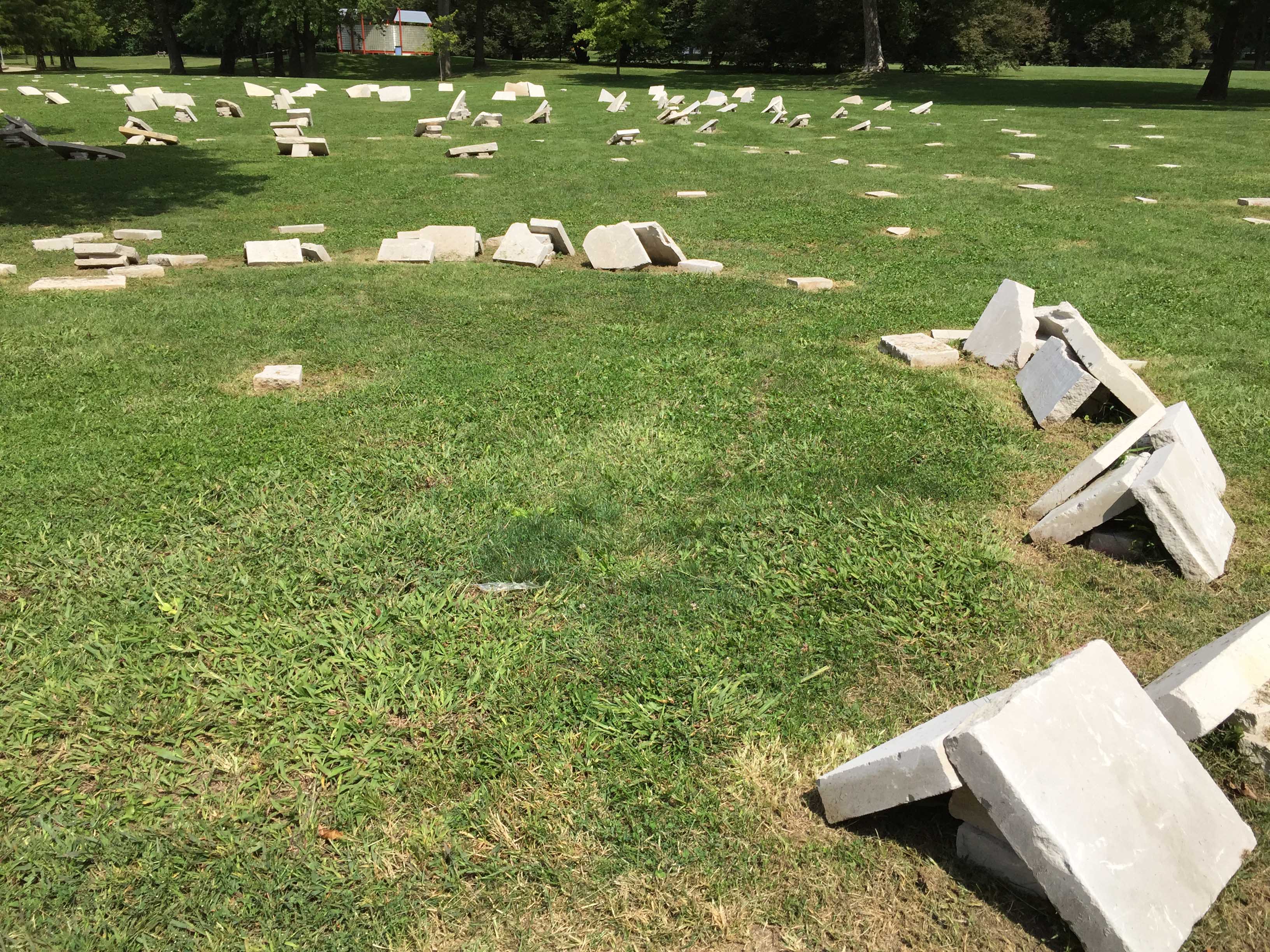
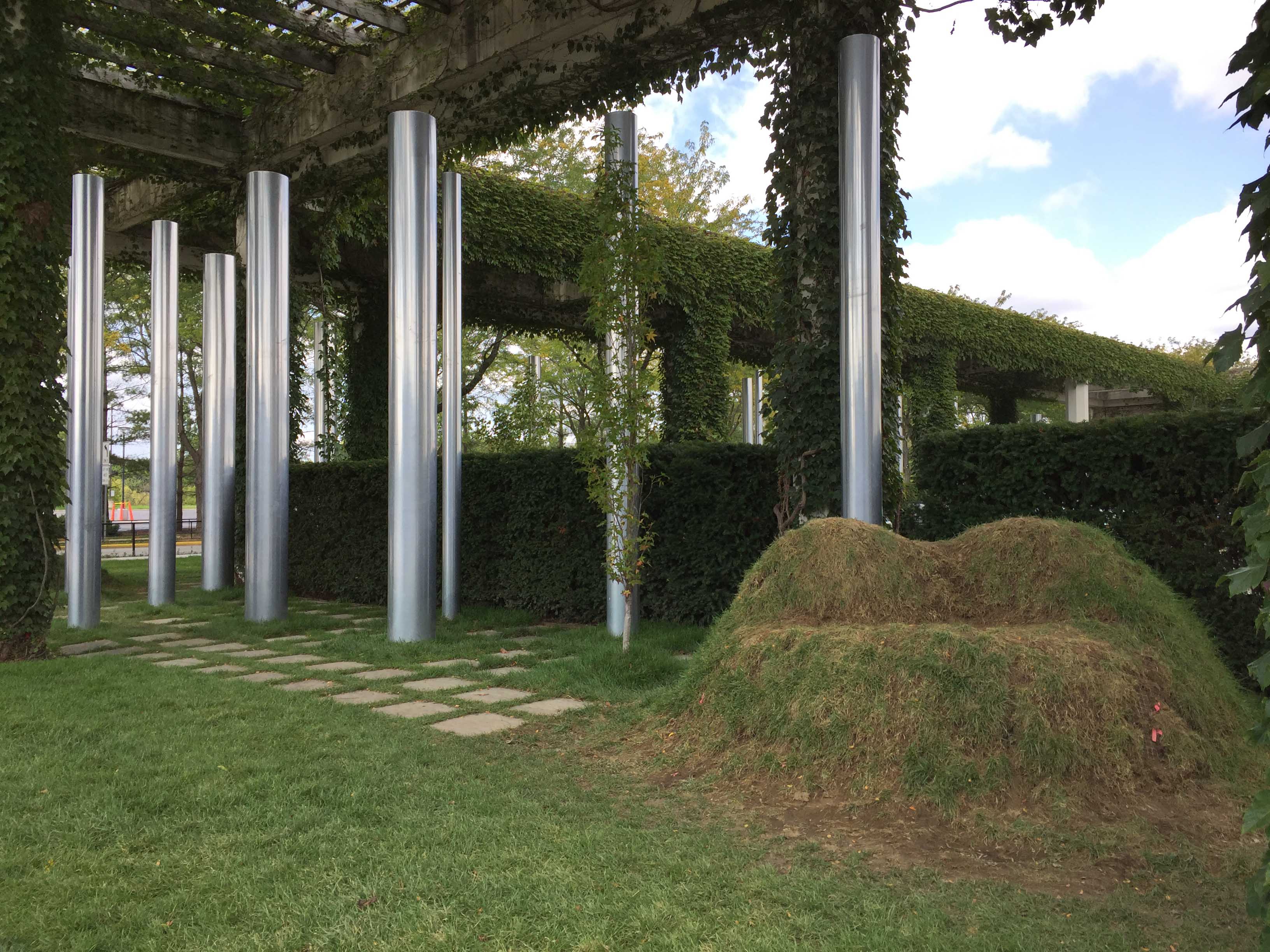
Throughout all of the festival’s press materials, the Miller Prize projects are described in conversation with, but independent from, the town’s important works of architecture. Where Columbus embeds narrative action within the town’s architecture, Exhibit Columbus operates just to the side of it and very much in the present. Aranda\Lasch’s Another Circle, for example, “responds to the strong formal and architectural elements already present in Mill Race Park”; Plan B Architecture & Urbanism’s Anything Can Happen in the Woods is comprised of columns that “are mirrored as a nod to Roche Dinkeloo’s aesthetic and to reflect their surroundings”; and Oyler Wu Collaborative’s The Exchange completes “the geometries implied by the three canopies” of Eero Saarinen’s former drive-through bank kiosks at the Irwin Conference Center.3
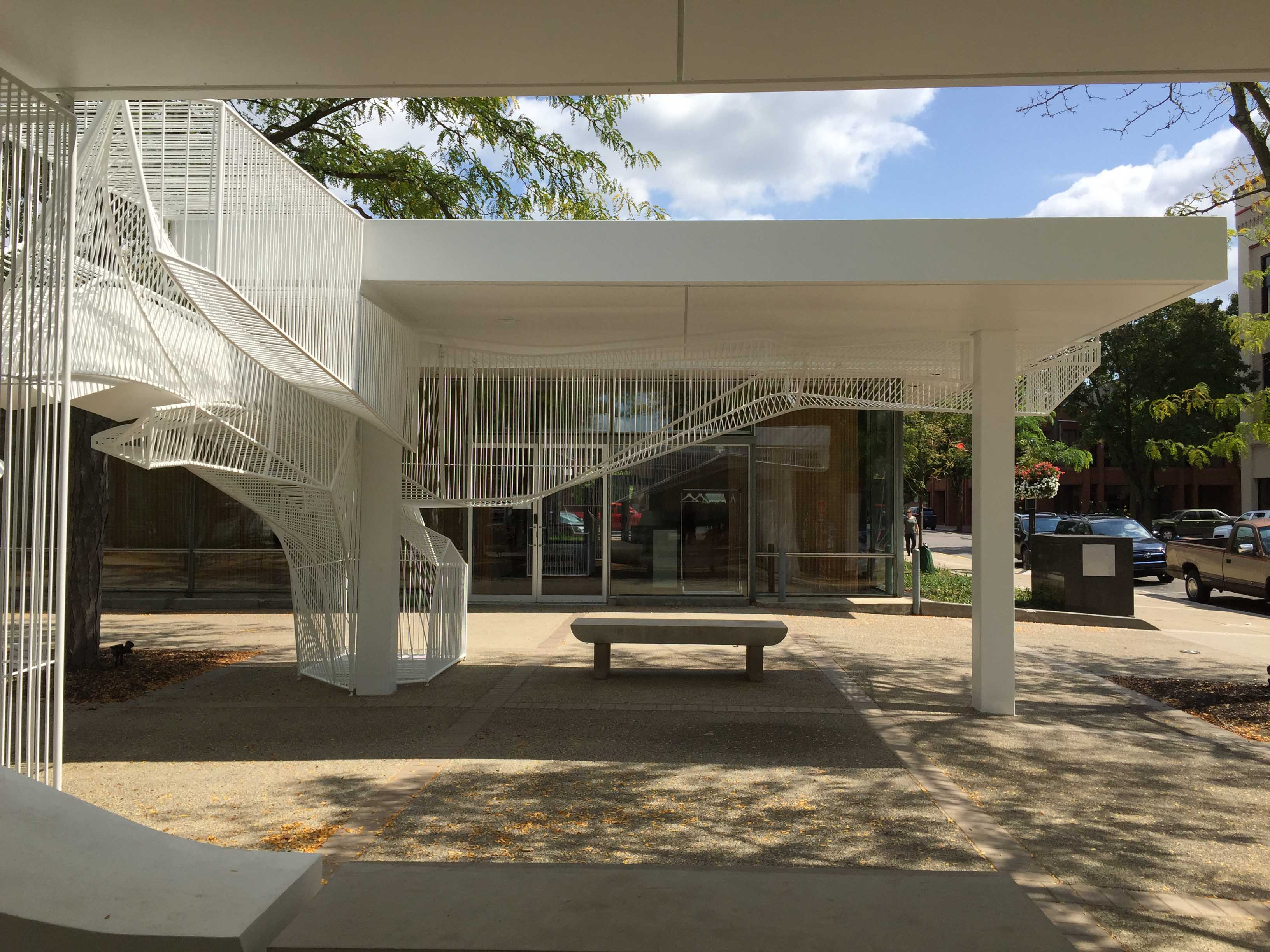
This language and the other media surrounding Exhibit Columbus provide a strong rhetorical counterpoint to the nostalgic weight of Columbus. And, in fact, these two opposed representations—the film’s awed treatment, made by and for outsiders, and the festival’s more playful, local interventions—seem to highlight broader discontinuities in the way the public engages with narratives of architecture. I was curious before visiting Columbus about its residents’ attitudes about the town’s architectural legacy, how present it was in their daily lives. From the outside, it appears almost like a museum of architecture—one on the tourism bucket-list. But after visiting Exhibit Columbus and watching Columbus in the same day, I felt as if I was experiencing two entirely different towns.
Part of Columbus’s inability to access typical touristic narratives of architectural history can be attributed to its scale and the story of its development. It is common practice for stewards of historic houses to package the stories of their creation (and creators) in the most compelling light. Visitors to J. Irwin Miller and his wife, Xenia’s house in Columbus, for example, are treated not just to a detailed tour of the building and grounds but also to a tidily packaged and admiring history of Eero Saarinen, Alexander Girard, and Dan Kiley. The contained structure of the house tour is harder to replicate on a larger scale. Since Columbus, Indiana, is not the work of a single architect, personality can’t be conjoined with intent, one key way in which interpreting this site for a touristic audience is a more complicated enterprise. The clearest personal narrative is the visionary confidence of J. Irwin Miller himself, who drove the town’s unique architectural patronage model. The explicitness and scale of Miller’s lofty ambitions, however, made them both hard to achieve and easy targets for present-day criticism.
For the purposes of Columbus, the town’s optimistic origin story is a vehicle for disappointment as the main characters confront the differences between the anticipated and actual results of its visionary plan. It’s here that the loss of interest in “things that matter” reveals wider relevance for those aware of the town’s past progressive goals. Exhibit Columbus, on the other hand, can’t indulge in the same kind of nostalgia-by-suggestion enacted by the film because its stated purpose is to stimulate tourism. Rather than treating the town’s modernist legacy as a relic or aberration, the festival instead celebrates the present as part of a smooth continuum of daring design—measuring the success of Miller’s plan differently. Exhibit Columbus argues that because these buildings remain, because they embody ideals of midcentury optimism that can be engaged, and because they’ve given rise to an exciting and unusual town in an unassuming region, Columbus is a place worth visiting.4 Rather than keeping the town’s landmarks distant and unknowable as they are in Columbus, appreciated (noticed, even) by a select and attentive few, Exhibit Columbus’s modus operandi is instead to collapse temporal distance by way of physical distance, to encourage relationships with the town’s historic architecture, and to grow it by creating contemporary, adjacent installations that engage visitors in new ways.
Kogonada’s indebtedness to the work of early midcentury Japanese filmmaker Yasujiro Ozu is well documented and acknowledged (down to his pseudonym, which references Ozu’s longtime screenwriting partner, Kogo Noda). Many of Ozu’s preoccupations—the tension between past and present, generational guilt and responsibility—are explored in Columbus as Casey and Jin discuss their strained relationships with their parents in front of, or while roaming through, the town’s landmarks. But importantly, while Ozu is known for camera placements that allow for unconventional framings (like his so-called tatami-height low-to-the ground shots), most of the action in his films takes place in interiors, specifically in domestic settings.5 The majority of Columbus, in contrast, takes place outdoors, with an unusual amount of the action captured in static, wide-angle shots that recall Ezra Stoller’s midcentury architectural photographs. The framing and desaturation of the colors in the film evoke a historic and historicized experience of place, a place periodically intruded upon by chatty, contemporary navel-gazers. Because it feels as though original photographs of the First Christian Church or the Irwin Conference Center have simply come to life, viewers are enveloped in the same cool objectivity associated with these historic photos. Even the details of conversations are at a remove—floating in the realm of allegory rather than being bogged down in the actual details of Casey’s or Jin’s particular realities.
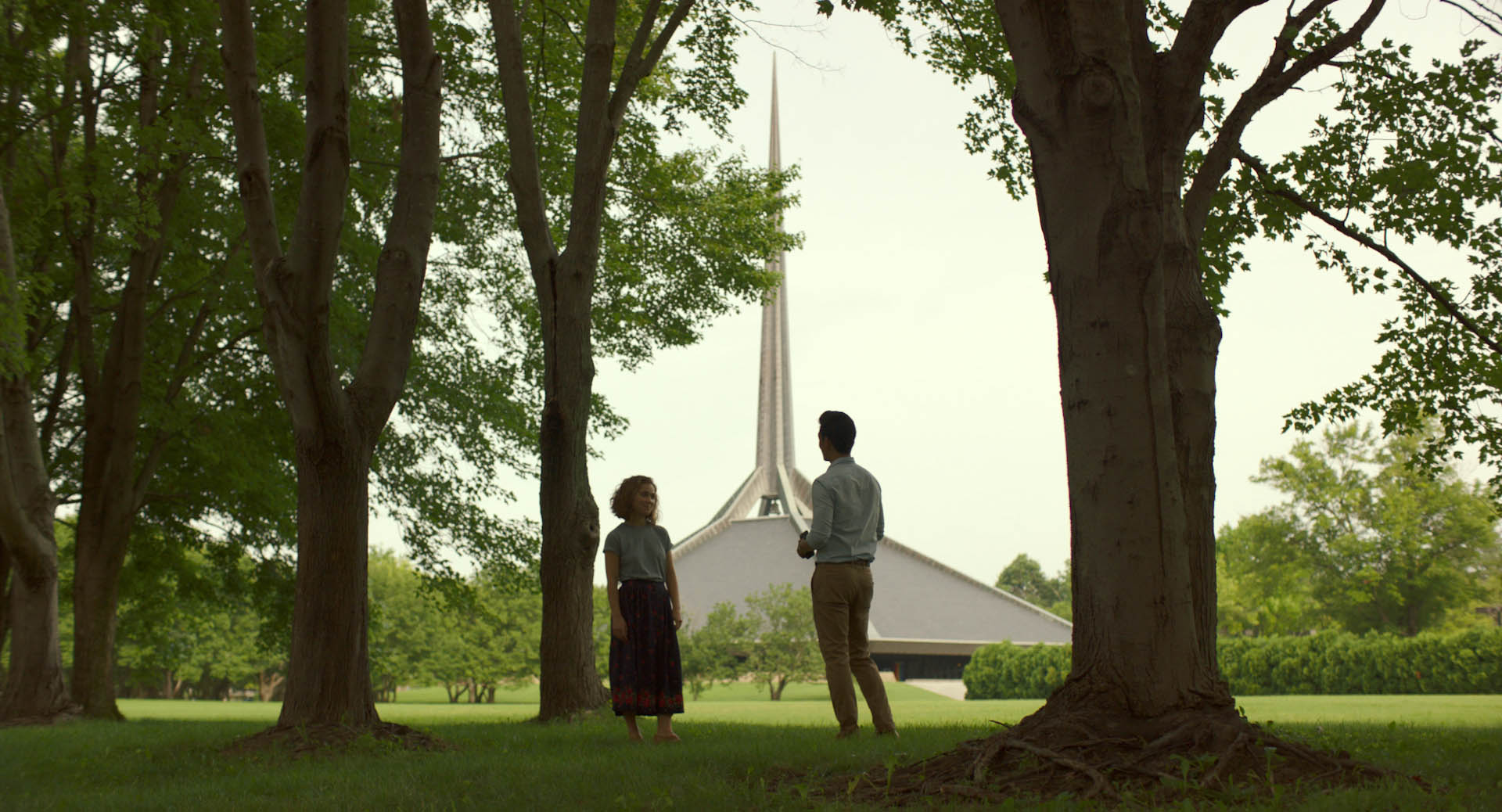
In an IndieWire interview, Kogonada described his motivations for selecting Columbus as the setting for his first feature film: “There’s something very hopeful about that town still to me. That it is this promise of possibility, but it’s also something very sad and melancholy because it’s not fulfilled. You know, it’s not as if this town is some utopian place where there’s no problems and modernism won.”6 Columbus therefore seems to be a perfectly hyperbolic backdrop of American disaffection and disappointment—an environment where there was something to win, or something to be gained and examined in the place of winning, where there might have been revolutionary social effects or even positive social outcomes spurred by idealistic architecture, and where these effects never really played out. And this in turn pushes us to examine the risks taken when architects and patrons make their radical ambitions explicit. By setting his film in Columbus, a place deeply rooted in recent history and animated with its own generational dramas, Kogonada is able to double down on his and Ozu’s shared focus on parent/adult-child relationships and architecture, specifically to expand the anxious draw of nostalgia beyond the domestic.7
Columbus’s architecture also provides a focus and foundation for Casey’s search for direction. By rehearsing her imagined tour-guide script and dutifully visiting and ranking the town’s important buildings, Casey provides her own alibi for not leaving home. Just like Noriko in Ozu’s Late Spring, who wants to stop time and stay at home, taking care of her father rather than getting married and starting a family, Casey finds her own satisfaction in the freeze-frame legibility of Columbus. Kogonada uses Casey’s experience of architecture as a way to reveal her inner life, a shortcut to understanding the profundity of her conflicted experiences with her hometown and with a present that doesn’t feel quite right. In one of their first encounters, Casey walks Jin around the exterior of the Irwin Conference Center (formerly the Irwin Union Bank), pointing out significant architectural features and explaining, in the voice of the tour guide she hopes to become, the significance of Eero Saarinen’s choices. She begins to tell Jin about how the building upended conventional positions that banks should impose or intimidate when he stops her midsentence and asks, “What moves you?” Casey is surprised that her personal impressions of the building might warrant exploration—that her own experience of Columbus is worth sharing.

Jin’s redirection of Casey’s tour-guide script to personal narrative is a pivotal moment in their relationship and in the film. It is through her eyes that Jin experiences delight in Columbus’s landmarks, and through their interactions that the viewer is positioned as a curious but privileged onlooker, a tourist with insider information. When Jin asks, “What moves you?” he’s asking for a piece of Casey’s enthusiasm, for access to an obsession around which his father’s career was built. Trying to escape his jaded worldview, Jin envies Casey’s wide-eyed belief in the power of thoughtful architecture to effect clear and calculable change. It is at this moment, just as we might finally be rewarded with an explanation of how architecture operates, or the specifics of Casey’s framework for understanding it, that Kogonada pulls back, producing a distance that denies us this satisfaction. He moves the camera away and takes it indoors, so we can see Casey through the Irwin Conference Center’s plate-glass window as she soundlessly gestures and emotes, just another person talking about a building’s history, another human passing through the static heavy frame.
Though Columbus is about seeing people seeing, the disinterested camera is routinely placed to capture action ambiently. The seemingly accidental progress of the narrative rewards attentive observation and patience, a reading-between-the-lines promoted most explicitly by Casey’s coworker Gabriel, with his interest in marginalia. The film unfolds as a search for clues, with Jin and Casey wading through the ephemera of a previous generation to piece together their own present—Jin matching sketches in his father’s notebook to their subject as a way of overcoming their estrangement, and Casey exhaustively observing her mother’s movements, watching for hints of relapse or trouble. Architectural knowledge, too, is presented as so much marginalia—information for collectors that’s not readily accessible or easily interpreted.
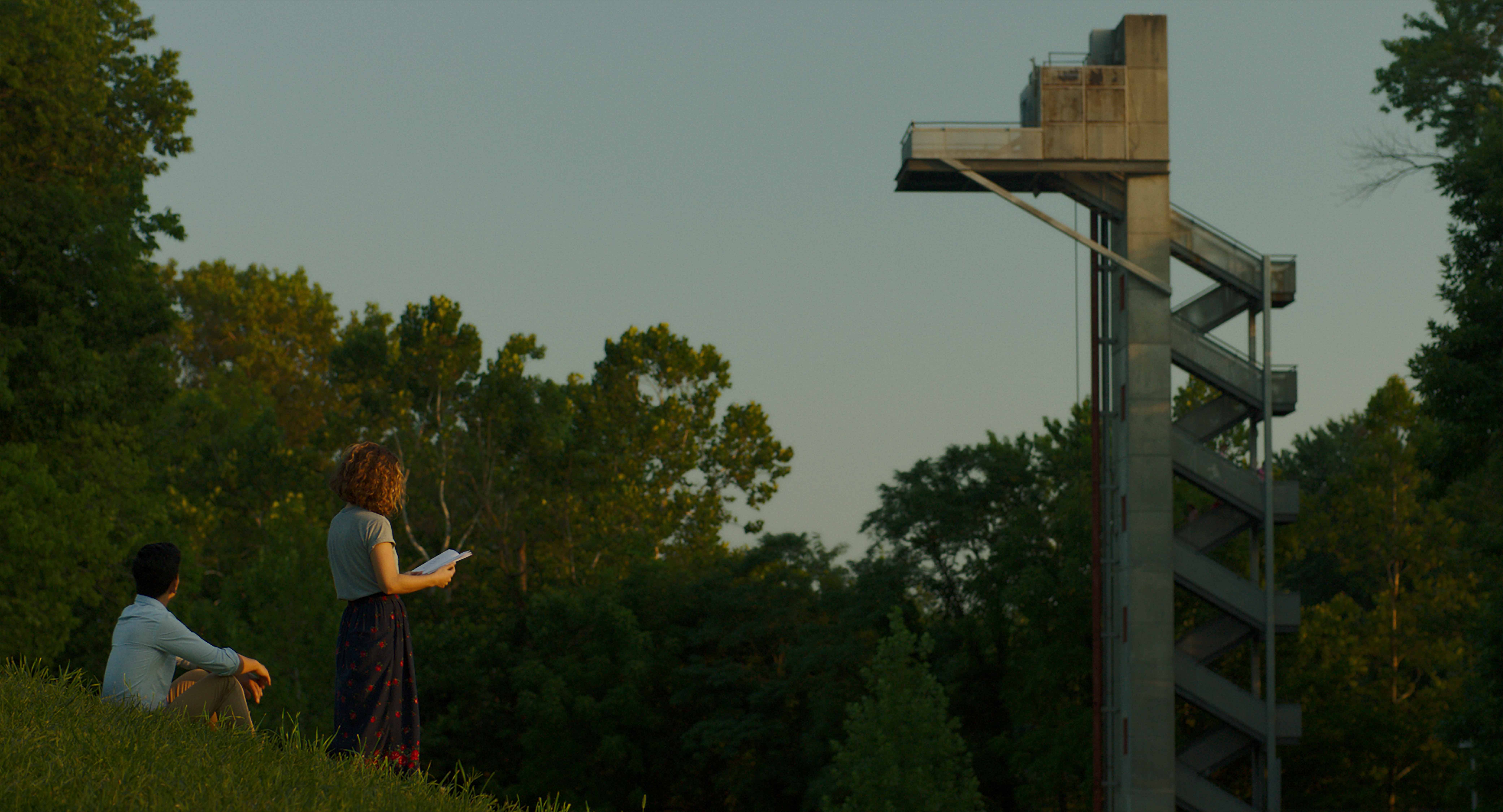
Despite her self-proclaimed bookishness, Casey’s understanding of the architecture she venerates is largely experiential and innate. She relishes speculating about what the architects of Columbus meant with certain design moves and draws Jin into conversations about ideas like the “Modernism with heart” for which his father advocated. Architectural intent is presented as entombed within the buildings of a previous generation, inscrutable just like Jin’s father or Casey’s mother. The impossibility of mastering architectural knowledge, as well as knowledge of the adult world beyond Columbus, is unquestioned by Casey, who willingly positions herself as a kind of self-righteous nostalgist. The distance that Kogonada maintains with his wide-shot framing keeps viewers similarly estranged, positioning them as consumers of tour-guide fact recitation and complicit in constructing a cloud of mysticism around architectural intent. Outside North Christian Church, Casey struggles to remember the year in which Eliel Saarinen died. When Jin reflexively takes out his phone to look up the date, she protests, proclaiming “smartphone, stupid human,” flashing him her flip phone with a smug look.
Returning again to Gabriel’s attention-span-versus-values argument, the problem is not that Jin’s smartphone is a quick fix but that it diverts attention away from what’s important, at least to Casey—which in this case is knowing things that matter, dates and facts, tidbits about architecture that Casey claims are disregarded by everyone else in Columbus. Jin, having grown up surrounded by just that sort of information from his architecture historian father, knows how unsatisfying collecting facts can be and urges Casey instead to explore her own responses to and experiences of the buildings they visit—to look inward. When she does eventually recall the correct answer about Saarinen, Jin quickly confirms it. What he can’t find on his phone, and what keeps him engaged throughout the action of the movie, is Casey’s personal story with architecture. When she takes him to see the First National Bank designed by Deborah Berke and describes it as a hopeful symbol for her in a tough time in her life, she doesn’t pepper her sentences with facts as she did at the Irwin Conference Center. Berke’s building provides Casey with an out from her routine life in Columbus—first as a focal point for her admiration, and second because it is contemporary (the building is only ten years old). Casey tells Jin that she met Berke after a lecture in Columbus and that Berke offered her help finding her way toward college on the East Coast. This encounter planted a seed of possibility for Casey, and an awareness of opportunities outside of her obligations to her mother. As a living contemporary architect invested in Columbus, Berke serves as a cross-generational bridge for Casey, drawing her out of a nostalgic realm and into the possibility of her own future.
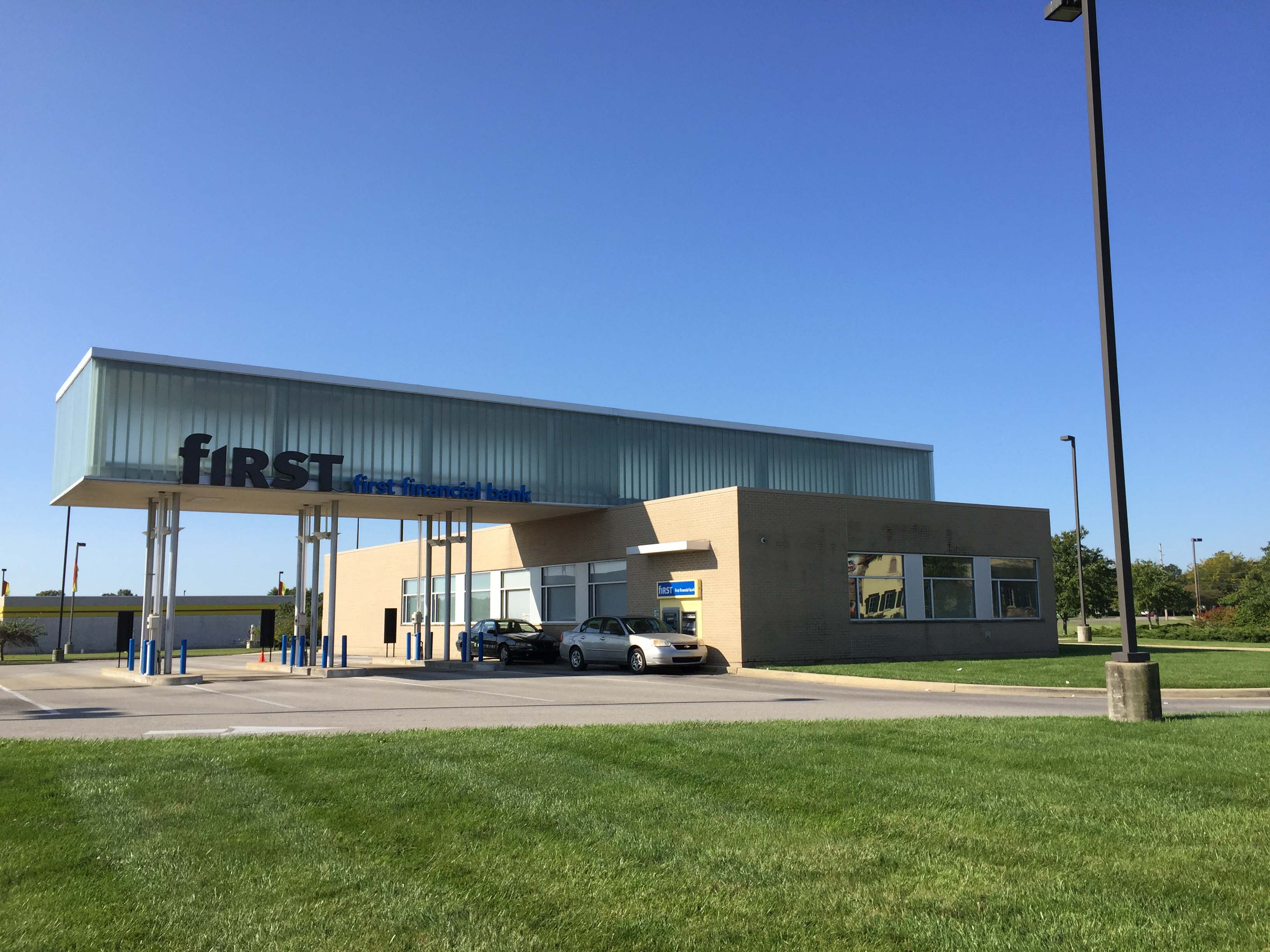
The bridging between past and present ends up being unusual and transformative in Columbus, permitting the film to end on a hopeful note with Casey trusting her instincts and leaving town while Jin gets comfortable and settles in. This same kind of bridging is essential to the project of Exhibit Columbus, where it is particularly designed to support the festival’s relentlessly celebratory representation of the town’s offerings. Where the film revels in the very existence of buildings like the North Christian Church and the Irwin Conference Center, the festival is obligated to make them new again, to enliven and invigorate visitors’ relationship with them, to reframe familiar historic buildings in a contemporary context. In general, this means siting some type of occupiable installation on or near an important building or feature in an effort to provoke a kind of conversation between them.
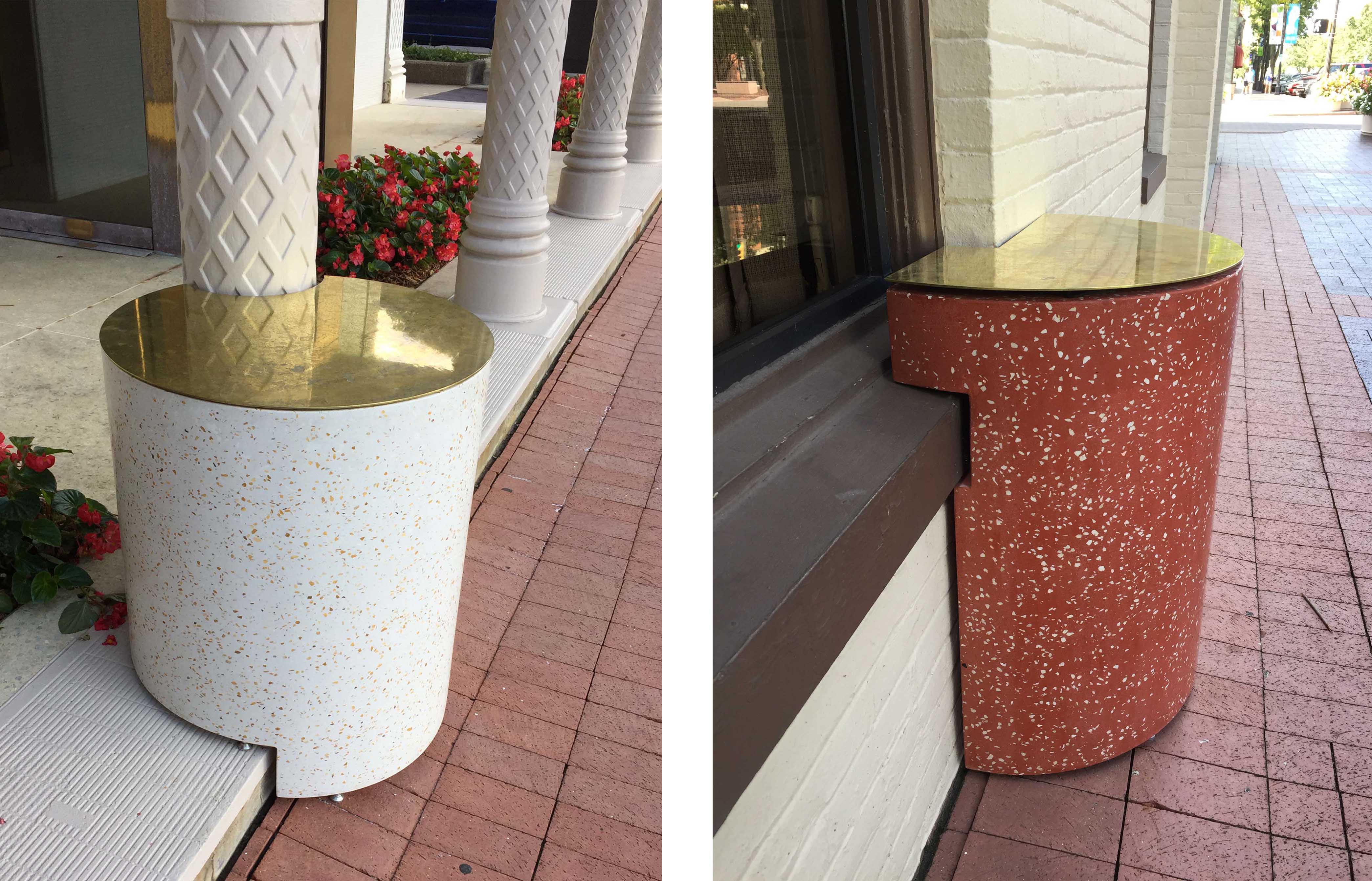
Of all the Exhibit Columbus installations, Productora’s precise parasitic urban furniture, Columbus Circles, is the most complicit in this conflicted project, or the most in on the joke. Their hybrid table/stool/platforms embrace and encircle elements of downtown Columbus’s unremarkable urban architectural features with colorful terrazzo and brass, as though a few randy animals had escaped from the modernist zoo and reproduced in the wild. The scattering of these stylish barnacles along the Washington Street Corridor refuses any attempt at understanding the project as a whole and counteracts the landmark-seeking drive of architectural tourism. Similarly, Aranda\Lasch’s Another Circle, sited in the Michael Van Valkenburgh–designed Mill Race Park, invites discovery and transformation by visitors. Stacks of salvaged Indiana Limestone are scattered near the circular lake in an attempt to “articulate fields of activity for contemporary park visitors.”8
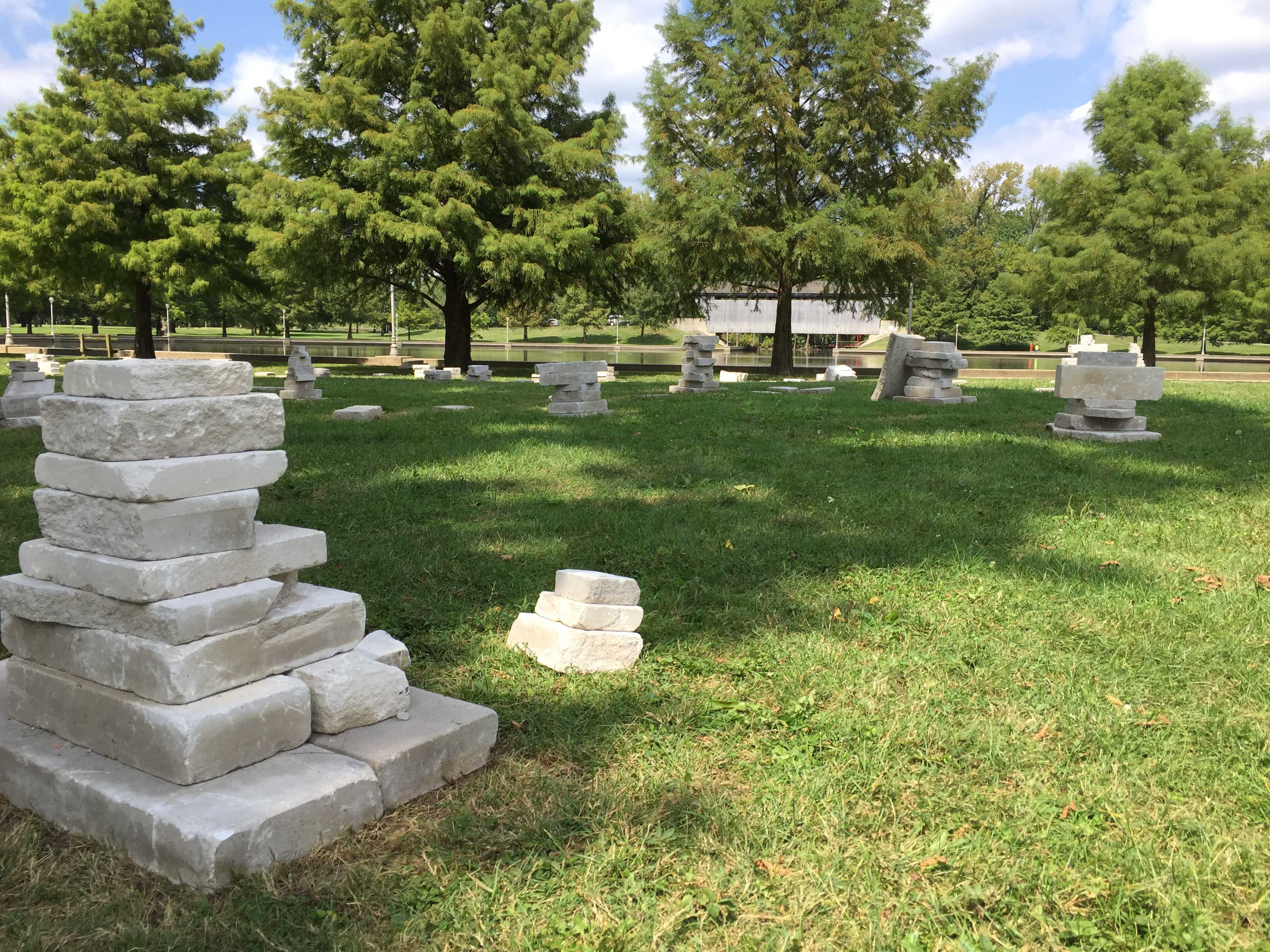
There is an audio component to Exhibit Columbus as well. Promoted on all festival media, the Hear/Here app offers a rich soundscape overlaid on and activated by travel through the town and the festival’s different destinations.9 The app allows visitors to hear clips of J. Irwin Miller and other relevant historic figures as well as responses and reactions recorded by contemporary visitors, layering a history of experience and reaction onto the works. I enjoyed using the app—it was like a cosmic guide through an unfamiliar town, perking up with ambient music and commentary as I approached each site of interest. In addition, I found that its interactivity upended and reconfigured the traditional experience of space, specifically urban space. Suddenly, sitting before the Irwin Conference Center or within Another Circle, I was confronted with the opinions of strangers, the voices of random onlookers who described their own associations and reactions to the works. The combined effect of the installations’ careful riffing on the town’s buildings and the app’s solicitation for live feedback made the muscular, broad-stroke social-engineering impulse for which Columbus’s architecture is known feel historic. Having opened up the floor to comments, it seemed that the festival had made those comments into the show itself.
Columbus and Exhibit Columbus both effectively dance around the past. Both address a kind of earnest thirst for answers through implied resonances with history; both work with the same base material to explore what it means to build upon, or fail at building upon, a legacy. But they diverge in what they want to do with that past. Namely, Columbus can afford to indulge in moody introspection; Exhibit Columbus cannot—for the festival must frame the town’s history to incorporate a lively and welcoming present.
These two incarnations of the same place prod the aging of architecture from opposite directions by constructing separate touristic modes of access and value that don’t perfectly overlap. Kogonada’s contribution in bringing the domestic preoccupations of Ozu to a town like Columbus is to problematize generational progress, to confront the inadequacies of translation from one era to another. The central action of the film is driven by one character acting as a guide for the other, revealing personal history as tethered to architectural discovery. The town’s historic buildings act as catalysts wrenching out emotions and ambitions, producing strong responses in Casey, described with affection by Jin as an “architecture nerd.” Exhibit Columbus, in its drive to build new audiences, can’t afford to speak only to nerds, or to require the kind of slow, quiet appreciation that Casey willingly offers. Instead the festival opts to validate and reflect all experiences, adopting a strategy of inclusion and acceptance that the festival’s format suggests is now required for Modern architecture to engage a broad constituency. This technique, focused as it is on participation and feedback, ignores the very real differences between buildings, architects, and eras in favor of homogeneously offering up content for review. Where Columbus proposes a microscale of connoisseurship, Exhibit Columbus offers the macro—neither approach, unfortunately, is capable of addressing the nuance found in Columbus itself.
-
Columbus is home to an exceptional quantity of midcentury buildings designed by architecture heavyweights. This is entirely thanks to a philanthropic effort that began in 1957 by Cummins Corporation Chairman and hometown booster J. Irwin Miller that provided funding for services on public buildings if the architects working on them were selected from a pre-approved short list. While Columbus has been well known within architecture circles (in 2012 it was the AIA’s “sixth most architecturally important city in the country”), its location about fifty miles south of Indianapolis and its relatively rural setting have kept it under-visited and off the national radar. ↩
-
As of October 24, 2017, Wikipedia reported a record-breaking box-office gross of $8,953 for the film at the Yes Cinema. Using average ticket prices, this indicates that about 1,790 tickets were sold during the entire run, link. The most spectacular benefit of seeing Columbus in Columbus was one of the local ads that played just before the previews. Made for a local Chevrolet dealership, the ad features two men reenacting scenes from Columbus in various locations around town and is framed just like Kogonada frames the film. Instead of wrought discussions about the meaning of architecture or personal freedom, though, their dialogue centers around getting one of the characters into a new Chevy. Just as in Columbus, in which Jin’s father collapses on the sidewalk outside Saarinen’s First Christian Church, in the Chevy promo, the older salesman collapses, and the younger one comes running and asks him for the keys to a new car. Playing as it did before the film, the success of the parody was actually quite hard to gauge or even recognize in the theater. More successful seems to be the life of the ad online. As of December 4, it’s had twelve thousand views on Facebook—more than six times as many Columbus tickets as were sold at the Yes Cinema. ↩
-
Miller Prize installation descriptions can be found on the Exhibit Columbus website at link. ↩
-
From the Exhibit Columbus Introduction Map and Brochure, available at the Columbus Area Visitors Center and presented by Columbus Regional Health: “Dotted around downtown next to legendary designs, you will find installations that will speak to you in new ways about design and the art of fabrication. At the same time they invite you to enter into a conversation with the past. There is no place in the world like Columbus, and we believe today our city is again alive with daring new designs that make Columbus look like a city of the future.” ↩
-
David Bordwell, Ozu and the Poetics of Cinema (Princeton, NJ: Princeton University Press, 1988), 76. ↩
-
“Filmmaker Toolkit: Columbus’s director Kogonada,” IndieWire, podcast, 15:42–15:57, link. ↩
-
It’s not insignificant that Columbus is set in and around major Columbus landmarks designed by Eliel and Eero Saarinen. At the beginning of the film, Jin’s father tours the Miller House, designed by Eero Saarinen. Later, as he examines the First Christian Church, designed by Eero’s father Eliel, he collapses and is rushed to the hospital. Casey and Jin first connect while looking at the First Christian Church but soon visit Eero Saarinen’s Irwin Conference Center and eventually his North Christian Church, where they talk about the role of religion in the Modern movement. Jin is brought to the Miller House first by his father’s assistant and former student, mirroring the first scene of the film, and he visits again with Casey. The presence of father and son architects in the Saarinens, and the fact that Eero’s work for J. Irwin Miller’s private residence is highlighted by three separate visits within the film, foreshadow the necessary step both Jin and Casey must take to transcend their own parents’ successes and struggles. ↩
-
See the Exhibit Columbus description of the Aranda\Lasch piece Another Circle, which can be found on their website at link. ↩
-
Hear/Here is a beautifully designed piece of interactive art by Halsey Burgund, link. The app, which is only operational on site in Columbus, Indiana, is available at link. ↩
Sarah M. Hirschman is an architect and the 2017–18 Howard E. LeFevre Fellow at the Knowlton School of Architecture at the Ohio State University in Columbus, Ohio. She was co-curator of Un/Fair Use, an exhibition about architectural copyright held at the Center for Architecture in New York in 2015. She contributed a chapter about the legal definition of architectural originality to the new book Terms of Appropriation: Modern Architecture and Global Exchange (Routledge, 2018), link.

